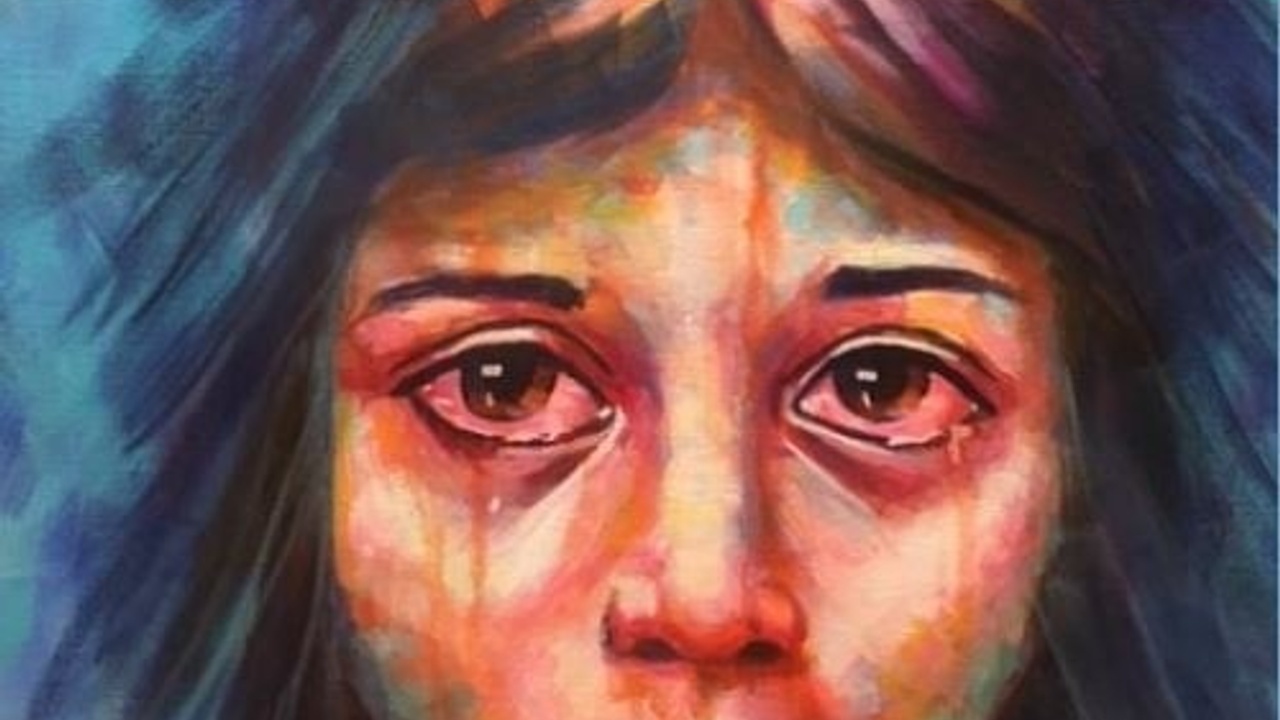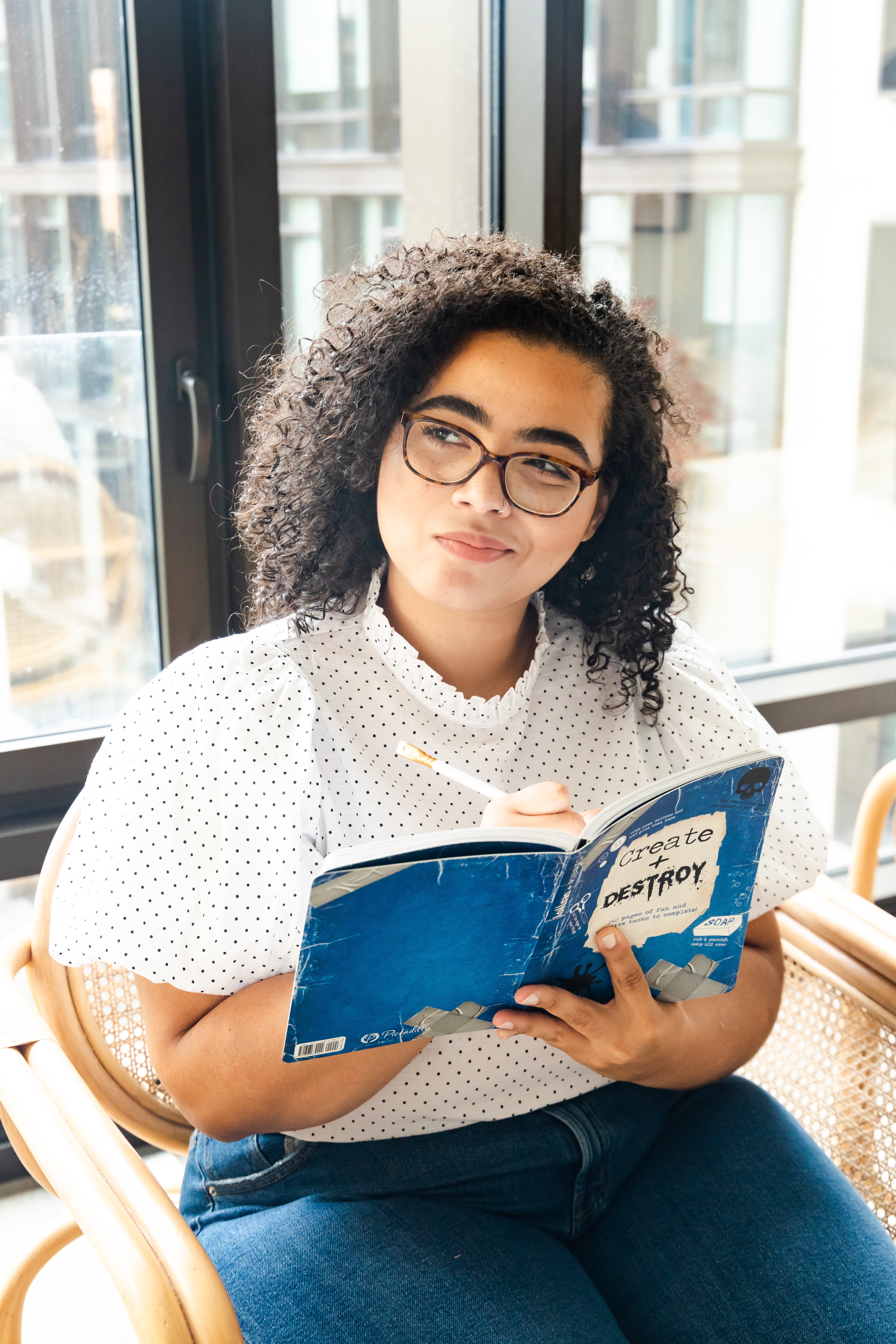
Dealing with Anxiety as Artists
Oct 13, 2021Author: Leigh Penner
YOUR HERO NEEDS A CHALLENGE TO CONQUER
As a writer, I've always said that I need to be in a place where I am about eighty percent happy or content with life in order to produce. Anything higher than eighty percent, and I have nothing to say. All writing needs conflict of some sort to be interesting. After all, your hero needs a challenge to conquer.
Total bliss is not a place from which to dream up conflict!
Anything lower than eighty percent, though, and I find that my own personal life begins to intrude on my ability to focus, my ability to dream, to think -- and I have difficulty bearing down, clearing my head, and getting the words out to say what I want to say.
My medium might be words, but the concept is the same for visual artists.
How do you create when you are anxious?
In 2021, anxiety has become a constant companion for many of us. So, how do we overcome adversity in order to get ourselves emotionally even enough to be able to create? How do we get ourselves out of the traps inside our head and into freedom in the studio? Especially, how do we do that if what we are anxious about is directly related to our process, our abilities and talent, and the quality of our art itself?
We have to learn how to manage our anxiety.
Here are some tips and thoughts on exactly that.
*Image by Sharon Handy
Dealing with artistic anxiety:
The first thing to realize is that controlling anxiety is not the same thing as stopping anxiety. There is always going to be a reason to stress where artwork (or life) is concerned. We can't control the world around us. We can learn how to understand and control our reactions so that we are capable of pursuing creative arts despite the limitations of our current capabilities or situation. It is important to understand that distinction.
I was recently listening to a podcast where fear (or any emotion) was described as a visitor knocking on the front door. You open the door and fear rushes inside. If you don't open the door, fear finds a way in through a window. Either way, once you hear that knock, fear either takes up residence, or you serve it a cup of tea then tell it to go. The important thing to realize is that fear is just the guest; fear is not who you are or what you are about.
I loved the visual image of actually seeing fear to the door and saying goodbye. As visual, creative people, that is a good way to view our anxieties. Through personification, we can visualize ourselves removing the 'guest' from our house. You may not have stopped all anxiety, but you have now reframed it inside your mind.
Recognize and Redirect:

To control anxiety, learn to recognize rumination and learn to redirect your thoughts. According to Sarah Fader, "rumination is the act of overthinking and mulling over thoughts that worry you and distract you from the present." In her article, Proven Techniques to Learn how to Deal with Anxiety, she refers to these types of thoughts as distortions. Like seeing a reflection in water, ruminated thoughts distort reality. Your brain is playing with you. Play back.
First, accept your feelings. Next, question your thoughts.
I feel that not all painting is of equal value. I feel like I should only paint if my painting is going to be a valuable, saleable masterpiece.
Okay, but...
Why do I think I can only paint if I produce a masterpiece? What makes me believe that is the end goal, or the only value to producing art?
Sometimes it is important to question ourselves and our values. We've all heard the slogan, it's the journey not the destination, but it can be difficult to remember this when we have ambitions and goals we are wanting to reach. There is nothing wrong with having dreams and ambitions. There would be no journeying without them. However, there is never only a singular value from the practice of art.
Active practice

Art is called practice for a reason. Being where you are in the moment is its own reward. If you are doing, you are learning. The masters among us got to the level they are at because they did the work of learning and practicing their craft. When you remember that each day that you are able to be in the studio -- no matter the quality of work you make, no matter how discouraged or worried you may be -- is another step towards obtaining the skill level you desire, you are doing the mental work of being an artist. You are overcoming your doubts and are taking tangible steps towards improving. Those tangible, active steps are an expression of defiance towards the anxiety we all at one time or another feel. It is another way of showing your anxieties to the door.
Thanks for stopping in, I've let you had your say, but you have to leave because I have to go paint now.
Kindness

We would never treat another artist as harshly as we often treat ourselves. We might offer criticism to another -- but only if it was constructive, and only in the nicest manner possible. We offer others kindness. It is essential, as artists, to learn to treat ourselves with the same gentleness we treat others.
That is not to say we treat the piece gently. No, we deconstruct with ruthlessness when necessary. The artwork, though, is not the person. It's too easy to forget this truth when the artwork is your own.
In a constructive critique of another artist's work, we always point out the strengths of the work prior to commenting on areas that could be improved. We hold in our minds the knowledge that no two artists are the same, and no two artists are at the same place on the developmental spectrum. We don't expect anyone else to be perfect. And that is okay.
Too often we do demand perfection of ourselves. Instead, we need to learn to offer ourselves positive self-talk. We need to learn to see the positives in our artwork and to speak in a way that uplifts us as artists who are making a genuine, good-faith effort -- the same way we would for any other artist. Ask yourself, if someone else had painted this, how would I treat the artist?
These are a few tips for overcoming those fears which may be holding you back from finding the creative joy in painting. With practice, your skills will improve. With a bold mindset, you will enjoy the process of watching that improvement happen.
Creativity awaits!
START CREATING YOUR BEST WORK TODAY
Want art inspiration right in your inbox?
Get updates like this blog post, via our newsletter, by signing up here.
We hate SPAM. We will never sell your information, for any reason.


